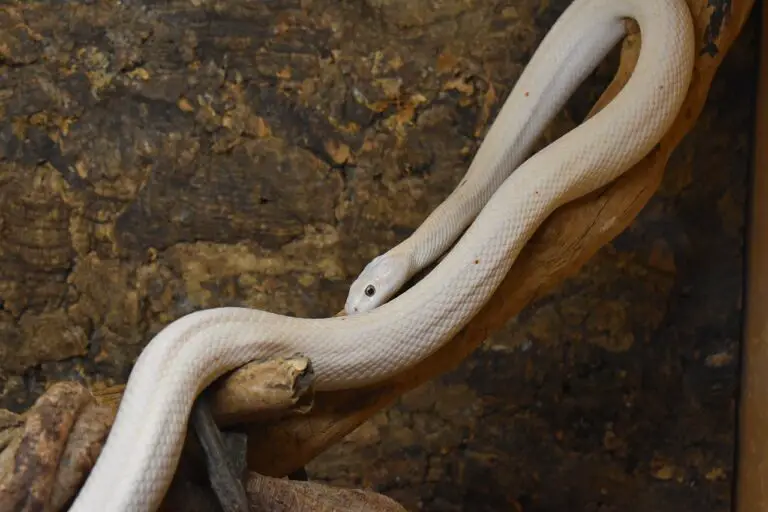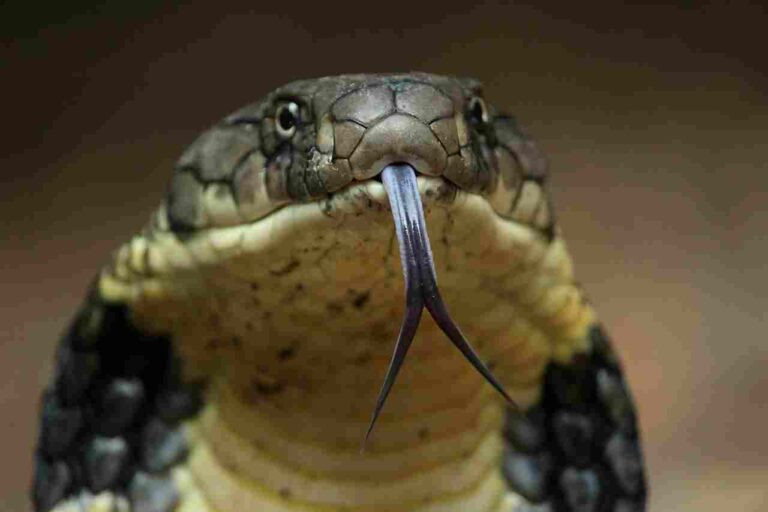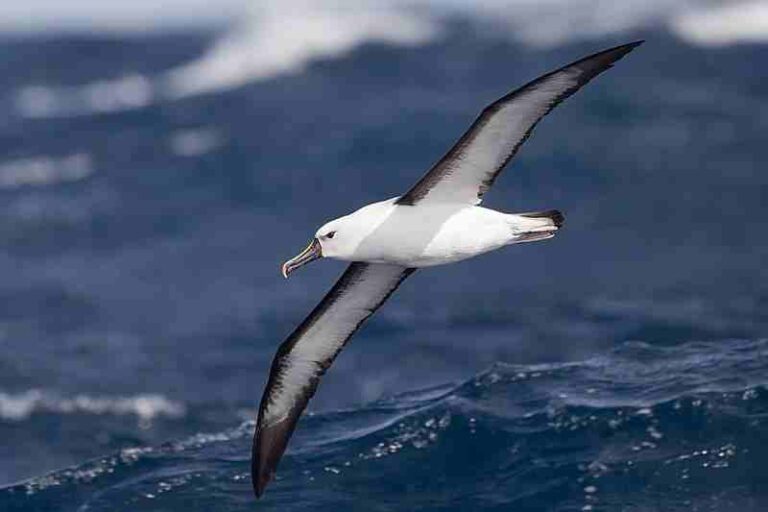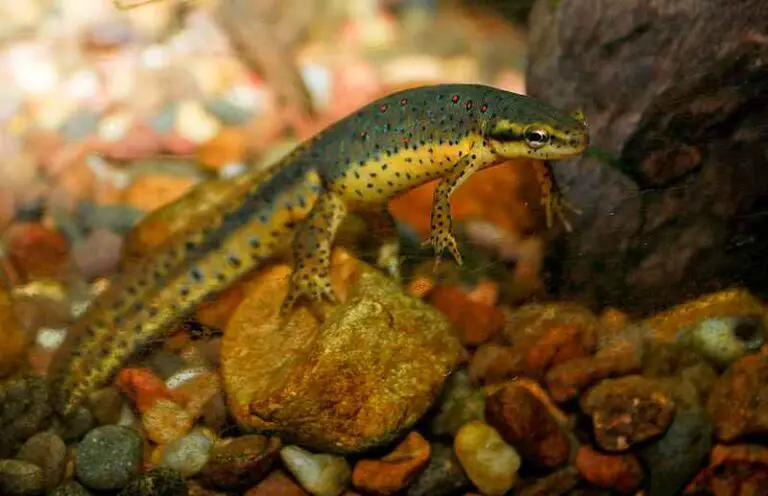Possum Vs Armadillo Size, Weight, Overall Comparison
Possums and armadillos, both nocturnal creatures with morphological resemblances, share the cover of darkness in their respective habitats. Despite these similarities, an exploration of their evolutionary history highlights their disparate genetic lineages. While their docile and non-confrontational nature makes physical altercations highly improbable, understanding their distinct behaviors provides insights into their roles within ecosystems.
Possum Vs Armadillo: Who Would Win in a Fight
In a physical confrontation between a possum and an armadillo, the possum is likely to emerge as the victor. The possum’s agility, predatory adaptations, and similar size create a potential advantage over the armadillo’s defensive mechanisms.
I. Nocturnal Analogues with Morphological Resemblance:
– Possums and armadillos, as nocturnal creatures, share a lifestyle characterized by darkness, accompanied by certain morphological resemblances.
II. Evolutionary Distinctions:
– Possums, belonging to the marsupial family, and armadillos, placental mammals, exhibit notable differences in their evolutionary paths.

III. Distinct Behaviors:
– Possums and armadillos showcase unique behaviors, reflecting their specific ecological roles and contributions within their respective environments.
IV. Possum’s Advantage in a Confrontation:
– The possum’s agility and predatory adaptations, including sharp teeth and claws, position it as the likely victor in a physical altercation with an armadillo.
V. Agility and Predatory Adaptations:
– The possum’s agility and evolved predatory traits provide it with the physical tools necessary to navigate and potentially overcome an armadillo.
VI. Slim Likelihood of Confrontation:
– Despite the possum’s potential advantage, both possums and armadillos exhibit a shared docile and non-confrontational demeanor, minimizing the probability of physical altercations.
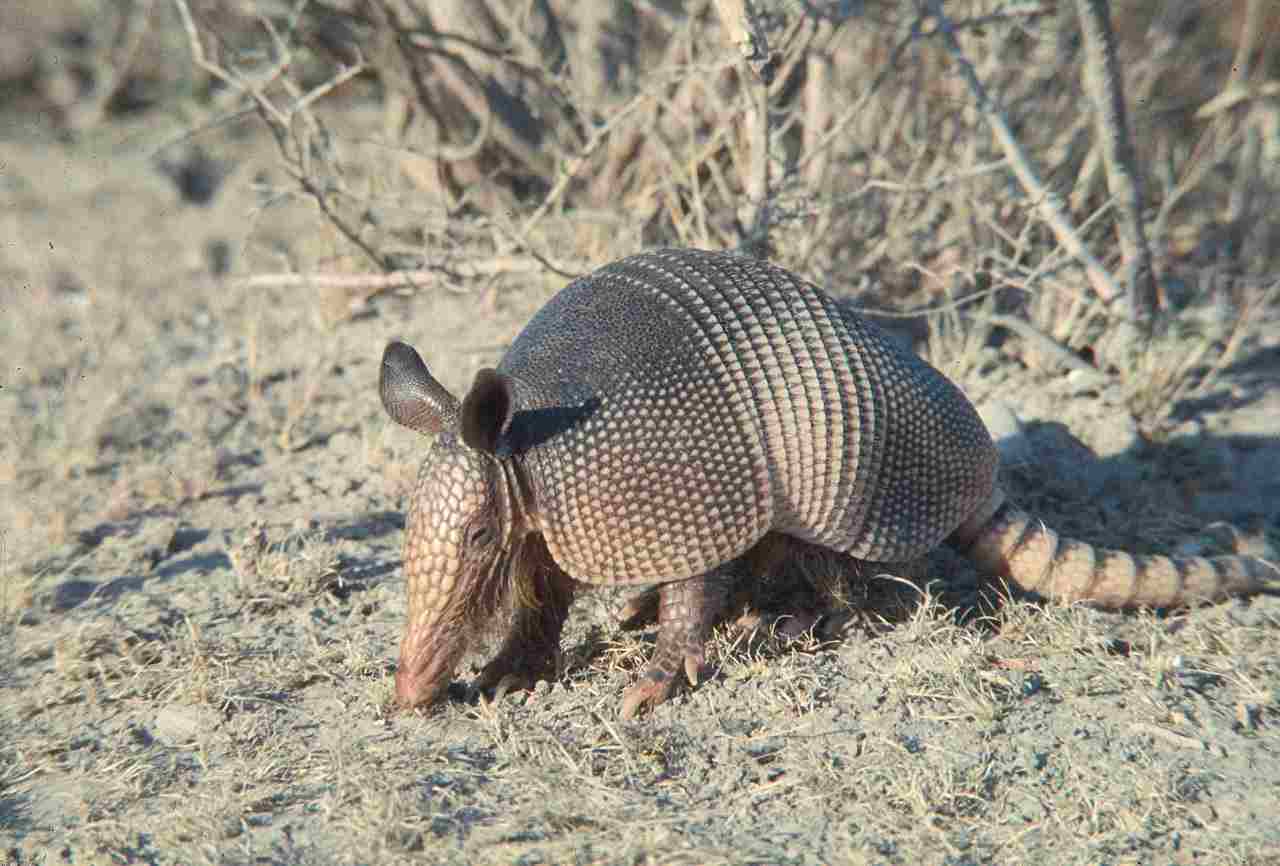
VII. Similar Weight and Size:
– Possums and armadillos share comparable weight and size, creating a balanced scenario in a potential confrontation and emphasizing the possum’s potential upper hand.
VIII. Non-confrontational Demeanor:
– The generally docile and non-confrontational nature of both possums and armadillos contributes to a harmonious coexistence, promoting peaceful interactions within their natural habitats.
IX. Ecological Roles:
– Understanding the ecological roles of possums and armadillos provides insight into their contributions to maintaining balance within ecosystems. Despite potential advantages, their shared docility supports peaceful interactions rather than confrontations in the wild.
*Details of Comparison
| Criteria | Possum | Armadillo |
| Taxonomy | Order: Diprotodontia, Family: Phalangeridae |
Order: Cingulata, Family: Dasypodidae
|
| Appearance | Arboreal, prehensile tails, fur variation |
Bony armored shell, variable size/color
|
| Size | Varies by species |
Varies among species
|
| Weight | Varies by species |
Generally heavier due to bony shell
|
| Bite Force (PSI) | Moderate |
Moderate, adapted for insectivorous diet
|
| Offensive Advantages | Sharp claws and teeth | Armored shell |
| Defensive Advantages | Agile climbers | Armored shell |
| Speed | Agile climbers, not fast runners |
Relatively slow runners
|
| Agility | Highly agile in trees |
Limited agility due to rigid shell
|
| Senses | Good night vision, sense of smell |
Limited eyesight, keen sense of smell
|
| Physical Capacity | Suited for climbing |
Well-adapted for digging and burrowing
|
| Habitat Preference(s) | Forested areas, urban environments |
Varied habitats, including burrows
|
| Tracks | Distinctive prints in trees |
Clawed prints, may include burrow entrances
|
| Lifespan | 2-4 years | 4-5 years |
| Mode of Feeding | Omnivorous |
Mainly insectivores
|
| Intelligence | Relatively intelligent |
Limited cognitive abilities
|
| Social Behavior | Mostly solitary | Primarily solitary |
| Reproduction | Marsupial reproduction |
Give birth to identical quadruplets
|
| Parental Behavior | Females provide care in the pouch |
Mothers care for and protect offspring
|
| Proximity to Human Areas | Common in urban areas |
May inhabit suburban and rural areas
|
| Behavior Toward Humans | Generally nocturnal and shy |
Usually shy, may display defensive behavior
|
| Danger Posed to Humans | Generally not dangerous |
Low risk, may transmit leprosy
|
| Precautions | Caution for potential disease transmission |
Caution due to leprosy risk
|
| Conservation Status | Varies by species, some facing threats |
Varies by species, some facing threats
|
Key Points
- Both possums and armadillos exhibit adaptability to diverse habitats.
- Neither poses significant danger to humans.
- Reproductive strategies differ, with possums being marsupials and armadillos giving birth to identical quadruplets.
- Defensive mechanisms also differ, with possums relying on agility and climbing abilities, while armadillos have an armored shell.
- Conservation status varies by species for both, with some facing potential threats.
1. Taxonomy
Possum:
Order: Diprotodontia
Family: Phalangeridae
Genus: Various (e.g., Trichosurus, Didelphis)
Armadillo:
Order: Cingulata
Family: Dasypodidae
Genus: Various (e.g., Dasypus, Euphractus)
2. Appearance

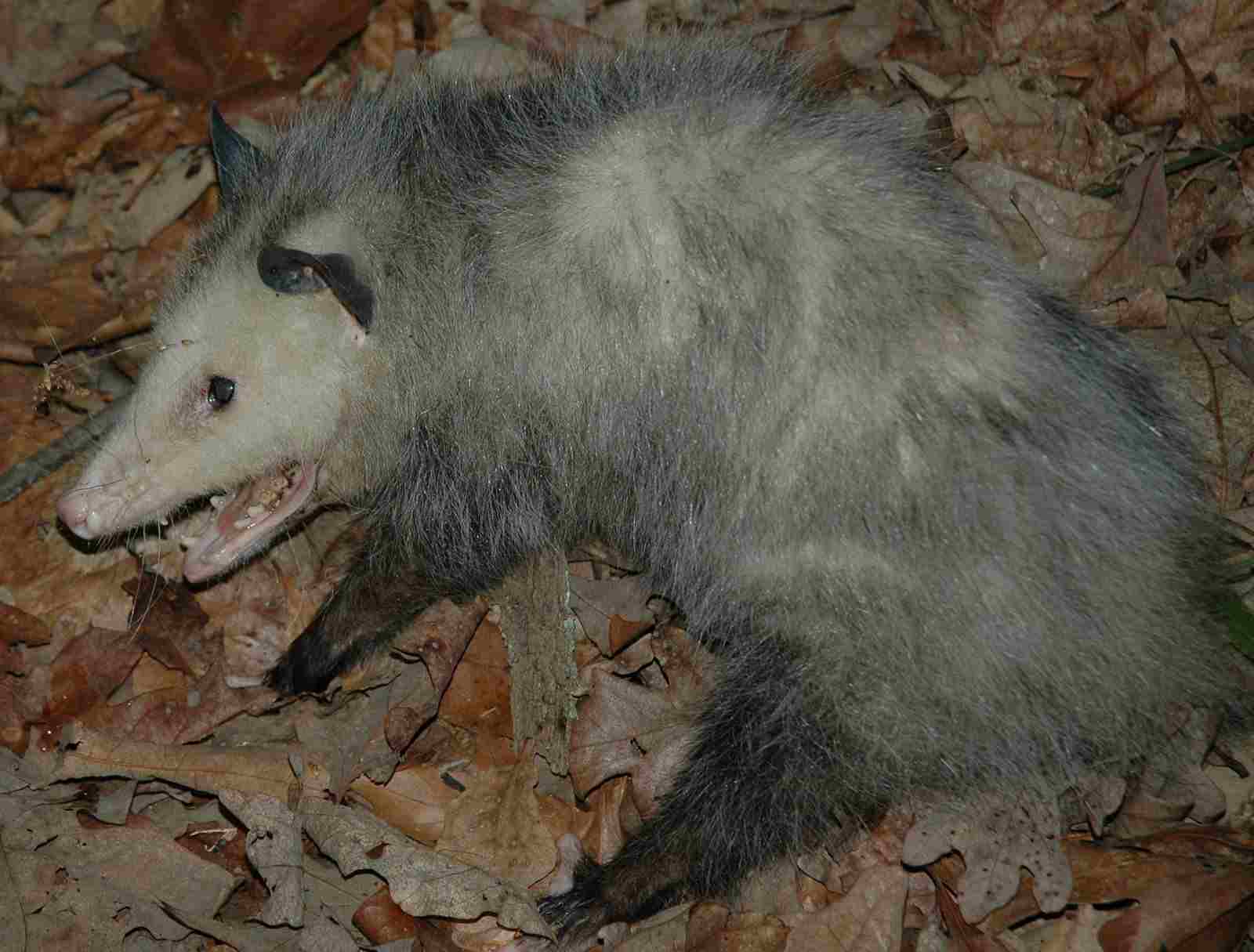
Possum:
Generally arboreal with prehensile tails.
Fur varies in color, often gray, brown, or black.
Pointed snouts and large ears.
Armadillo:
Characterized by a bony armored shell.
Variable in size and color, usually brown or gray.
Short legs and a tapered snout.
Comparison: Possums have a more traditional mammalian appearance, while armadillos are distinct with their armored shell.
Ecological Implications: The possum’s appearance aligns with its arboreal lifestyle, utilizing the prehensile tail for climbing. Armadillos, with their protective armor, have adapted to ground-dwelling environments, offering defense against predators.
3. Size
Possum:
Ranges in size depending on species.
Common brushtail possum: 32–58 cm (13–23 in) body length.
Armadillo:
Sizes vary widely among species.
Nine-banded armadillo: 38–58 cm (15–23 in) body length.
Comparison: While there is overlap in size, armadillos often have a more compact body due to their protective shell.
Ecological Implications: Size affects the ecological niche and resources required, influencing factors like foraging range and competition with other species.
4. Weight
Possum:
Varies by species.
Common brushtail possum: 1.2–4.5 kg (2.6–9.9 lbs).
Armadillo:
Weight depends on species.
Nine-banded armadillo: 2.5–6.5 kg (5.5–14.3 lbs).
Comparison: Armadillos are generally heavier, attributed partly to their bony shell.
Ecological Implications: Weight affects factors such as energy expenditure, diet, and the impact on the ecosystem.
5. Bite Force (PSI)
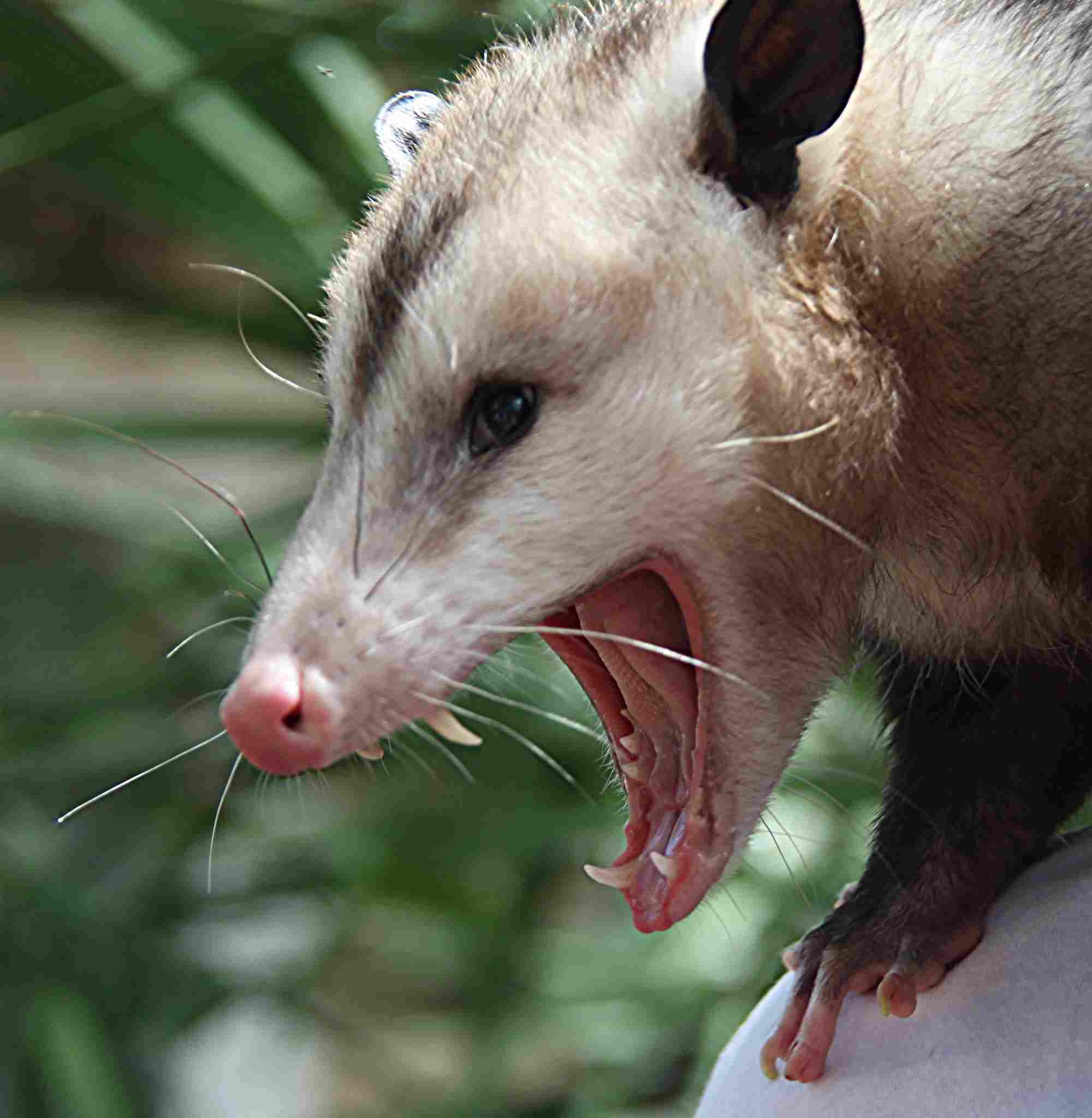
Possum:
Moderate bite force.
Armadillo:
Moderate bite force, adapted for insectivorous diet.
Comparison: Similarities in bite force indicate adaptations for their respective diets.
Ecological Implications: Bite force relates to feeding habits, influencing the types of prey or plant matter each species can consume.
6. Physical Offensive Advantages
Possum:
Sharp claws and teeth for climbing and defense.
Armadillo:
Armored shell provides protection against predators.
Comparison: While both possess defensive adaptations, possums rely on agility and sharp features, whereas armadillos have a built-in armor.
Ecological Implications: Offensive advantages contribute to survival strategies, impacting interactions with predators and competition for resources.
7. Physical Defensive Advantages
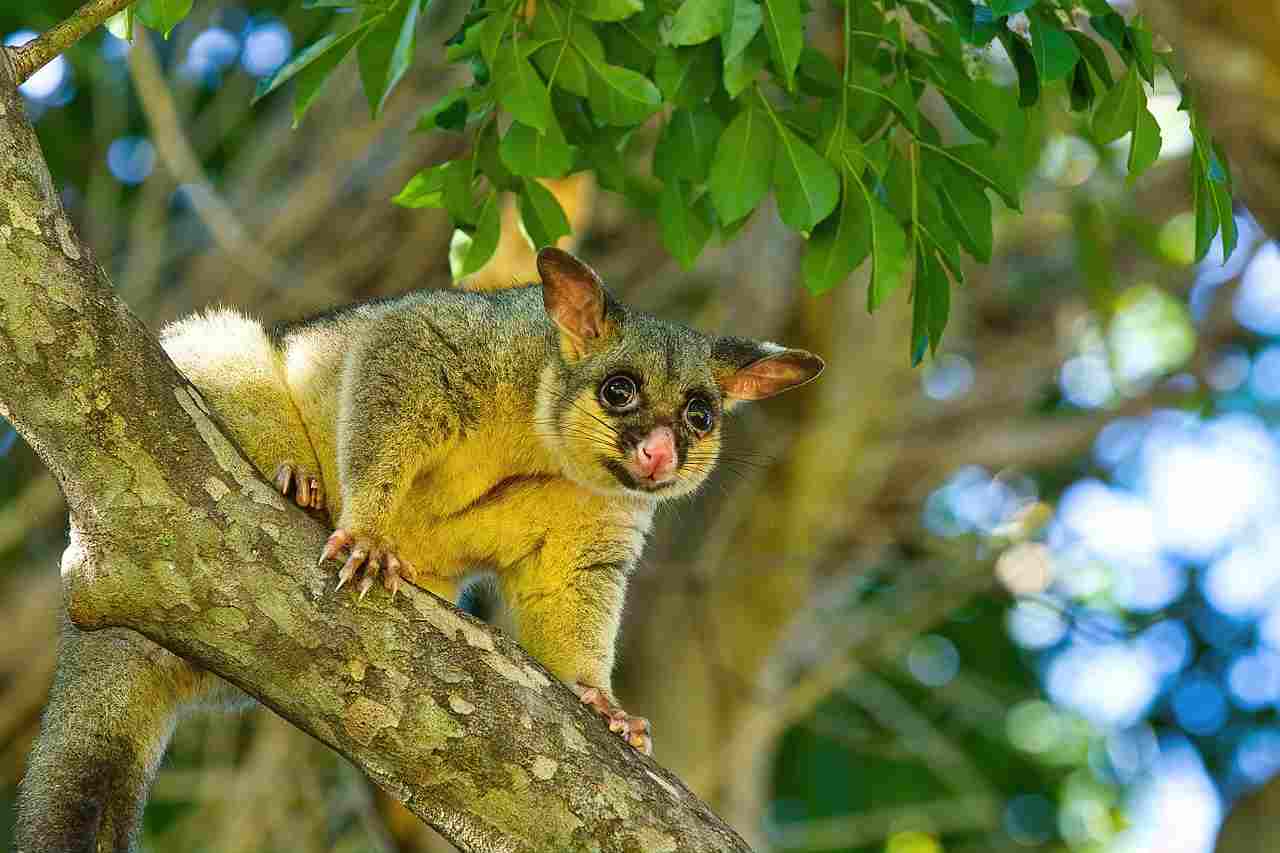
Possum:
Agile climbers, utilizing their prehensile tails.
Armadillo:
Armored shell acts as a shield against predators.
Comparison: Possums use agility for defense, whereas armadillos have a more passive defense with their protective shell.
Ecological Implications: Defensive mechanisms shape their interactions with predators and influence their choice of habitats.
8. Speed (Km/hour or Mile/hour)
Possum:
Agile climbers but not particularly fast runners.
Armadillo:
Relatively slow runners, relying on their armor for protection.
Comparison: Neither species is known for high-speed locomotion; their survival strategies are based on other factors.
Ecological Implications: Speed influences escape tactics and foraging efficiency, impacting their role within ecosystems.
9. Agility
Possum:
Highly agile in trees, aided by prehensile tails.
Armadillo:
Limited agility due to the rigid shell, but can burrow.
Comparison: Possums showcase agility in arboreal environments, whereas armadillos demonstrate adaptability through burrowing.
Ecological Implications: Agility affects the range of accessible habitats and foraging strategies, influencing their ecological roles.
10. Senses
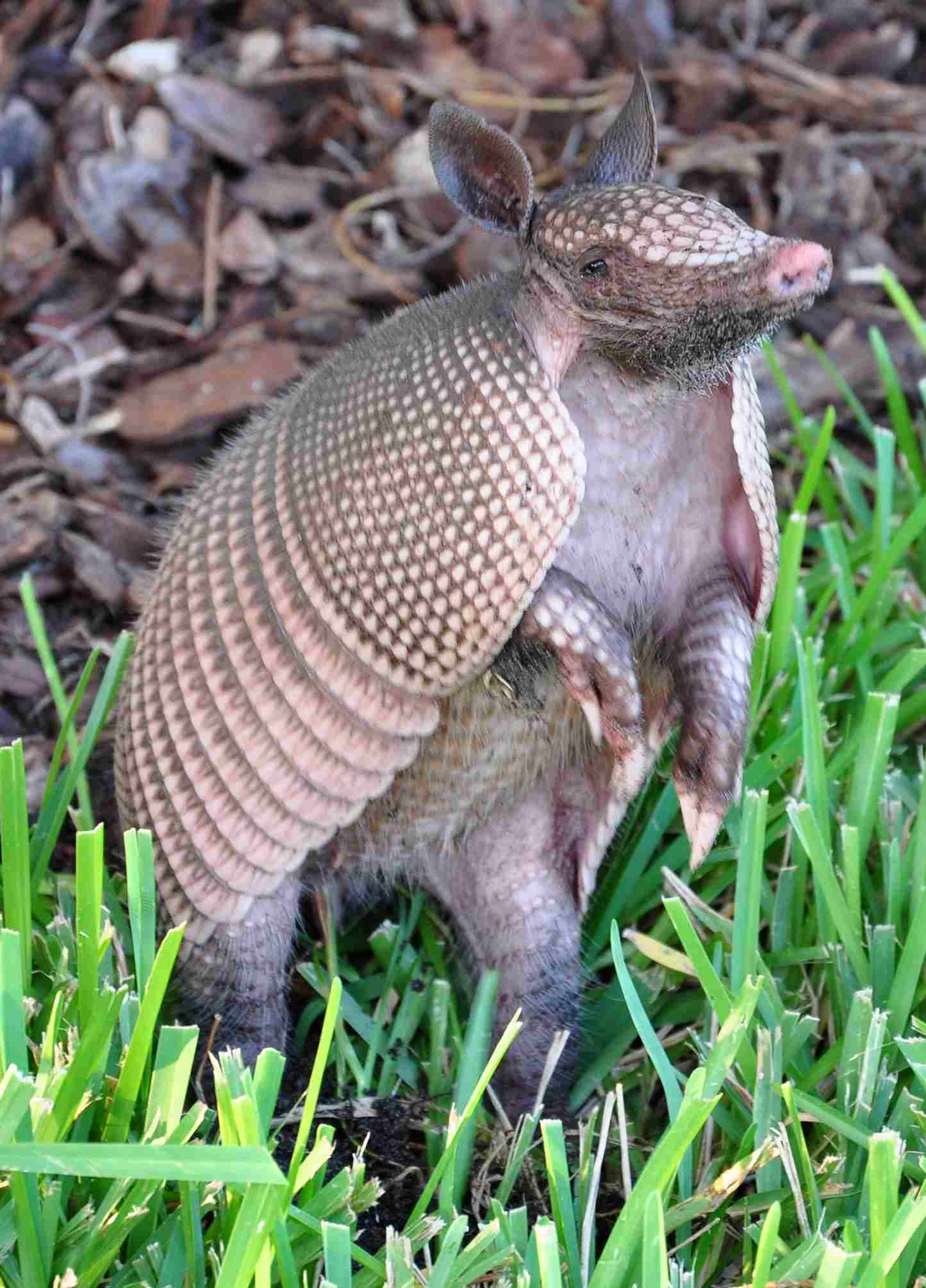
Possum:
Good night vision and sense of smell.
Armadillo:
Limited eyesight; relies on a keen sense of smell.
Comparison: Both species rely heavily on their sense of smell, but possums have better night vision.
Ecological Implications: Sensory adaptations impact foraging strategies, communication, and predator avoidance.
11. Overall Physical Capacity
Possum:
Suited for climbing and navigating trees.
Armadillo:
Well-adapted for digging and burrowing.
Comparison: Possums excel in arboreal environments, whereas armadillos are ground-dwelling specialists.
Ecological Implications: Physical capacity determines habitat utilization and influences ecological roles.
12. Habitat Preference(s)
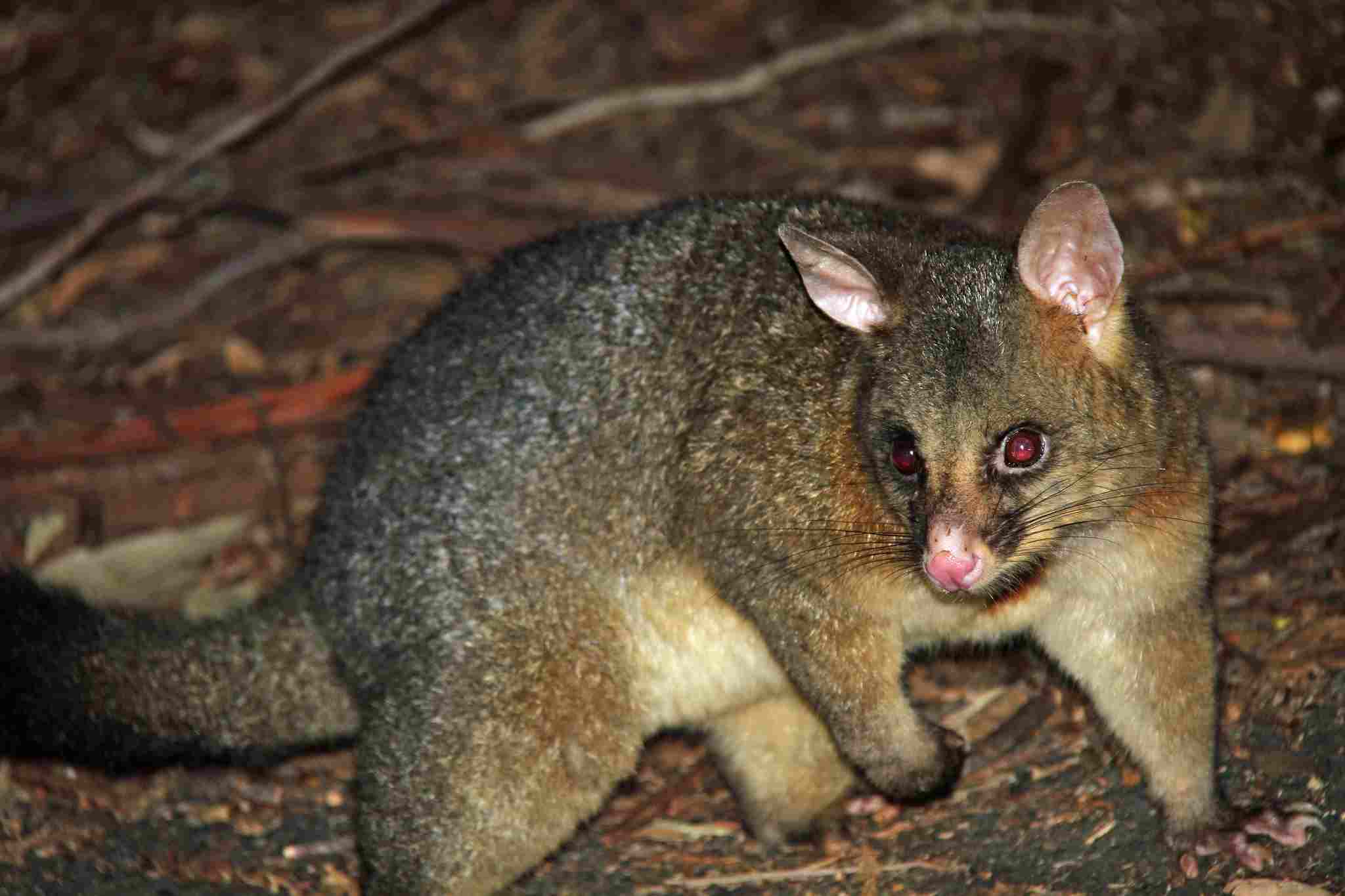
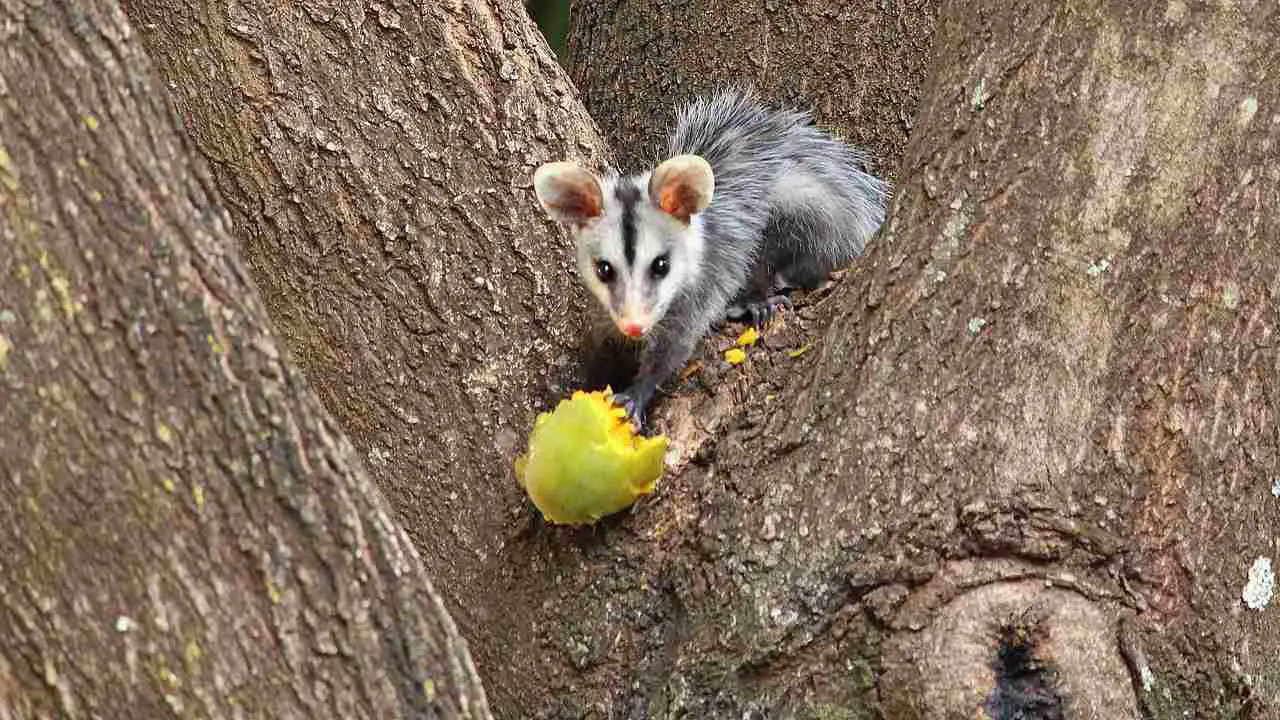
Possum:
Forested areas, urban environments.
Armadillo:
Varied habitats, including grasslands, forests, and burrows.
Comparison: While both can adapt to diverse environments, possums are more arboreal, and armadillos exhibit ground-dwelling and burrowing behavior.
Ecological Implications: Habitat preferences impact their roles in ecosystems and interactions with other species.
13. Tracks
Possum:
Distinctive prints with claw marks, often seen in trees.
Armadillo:
Clawed prints; may include burrow entrances.
Comparison: Track characteristics reflect their locomotion styles, with possums showing arboreal patterns and armadillos leaving marks related to their burrowing habits.
Ecological Implications: Tracking information aids researchers in studying behavior, distribution, and habitat use of these species.
14. Lifespan
Possum:
Typically 2-4 years in the wild.
Armadillo:
4-5 years in the wild, though some species may live longer.
Comparison: Both species have relatively short lifespans, with armadillos tending to live slightly longer.
Ecological Implications: Short lifespans contribute to rapid population turnover, influencing ecosystem dynamics.
15. Mode of Feeding
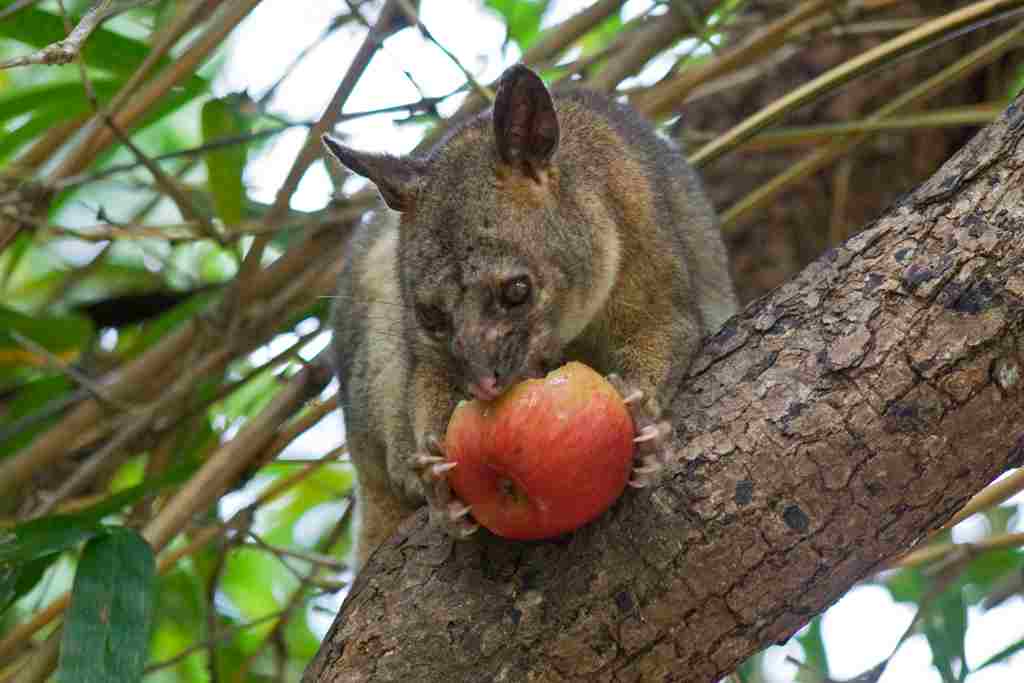
Possum:
Omnivorous, consuming fruits, leaves, insects, and small vertebrates.
Armadillo:
Mainly insectivores, feeding on insects and other invertebrates.
Comparison: While both exhibit some dietary overlap, possums have a broader omnivorous diet, while armadillos are specialized insectivores.
Ecological Implications: Feeding habits impact competition with other species and the availability of prey in their respective habitats.
16. Intelligence
Possum:
Displays problem-solving abilities; considered relatively intelligent.
Armadillo:
Limited cognitive abilities; primarily instinct-driven behavior.
Comparison: Possums demonstrate more advanced cognitive skills compared to armadillos.
Ecological Implications: Intelligence influences adaptability and responses to environmental challenges.
17. Social Behavior
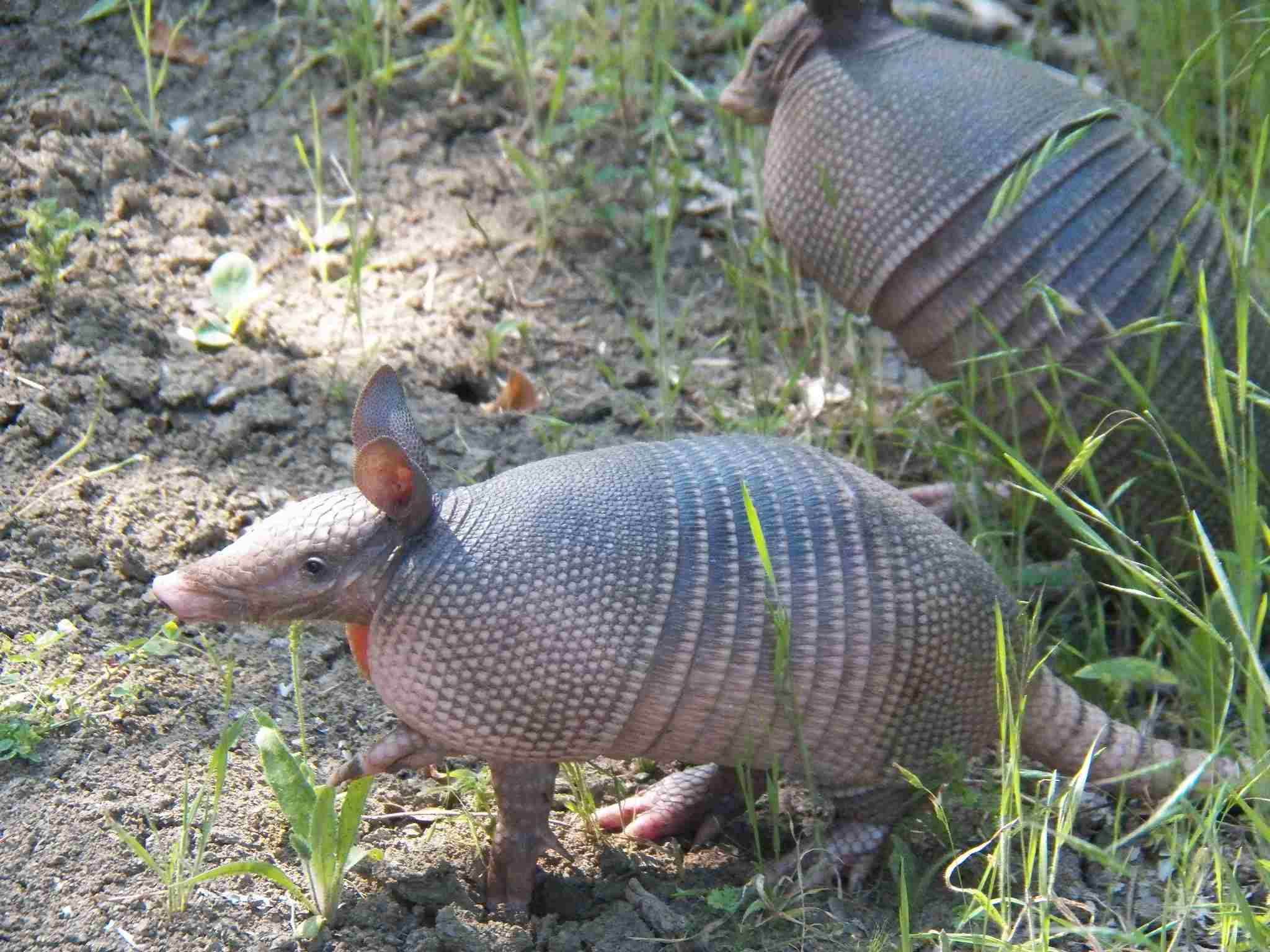
Possum:
Mostly solitary, though some species can be social.
Armadillo:
Primarily solitary, except during mating season.
Comparison: Both species generally exhibit solitary behavior, with limited social interactions.
Ecological Implications: Social behavior impacts population dynamics, resource utilization, and potential competition within their habitats.
18. Mode of Reproduction
Possum:
Typically marsupial reproduction with a short gestation period; young continue development in a pouch.
Armadillo:
Typically give birth to a litter of identical quadruplets, but some may have singletons.
Comparison: While both are mammals, possums exhibit marsupial reproduction, and armadillos have a unique mode of giving birth to identical quadruplets.
Ecological Implications: Reproductive strategies impact population growth rates and species’ ability to adapt to changing environments.
19. Parental Behavior
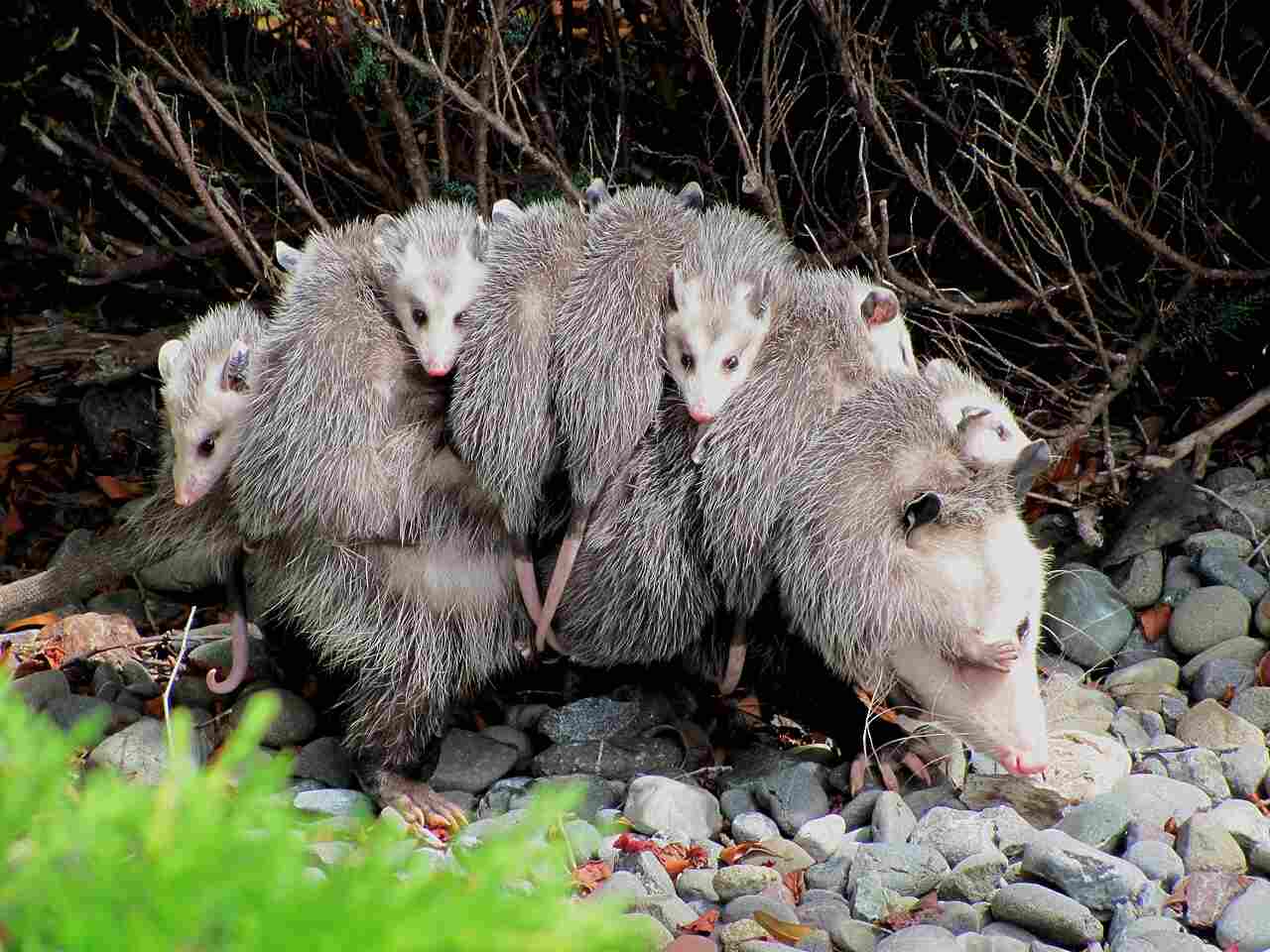
Possum:
Females provide care and protection for young in the pouch.
Armadillo:
Mothers care for and protect their offspring, teaching them survival skills.
Comparison: Both species display parental care, but possums carry their young in a pouch, while armadillos provide direct care to their offspring.
Ecological Implications: Parental behaviors contribute to the survival and development of the next generation.
20. Proximity to Human-Inhabited Areas
Possum:
Commonly found in urban areas, adapting well to human presence.
Armadillo:
May inhabit suburban and rural areas, often seen near human dwellings.
Comparison: Both species show adaptability to human-altered environments.
Ecological Implications: Proximity to human habitats can lead to conflicts or interactions that affect the behavior and well-being of these species.
21. Behavior Toward Humans

Possum:
Generally nocturnal and shy; may become more visible in urban areas.
Armadillo:
Usually shy but may display defensive behavior if threatened.
Comparison: Both species exhibit a degree of shyness but may show different levels of tolerance or avoidance toward humans.
Ecological Implications: Behavioral responses to human presence influence the coexistence and potential conflicts between these species and humans.
22. Danger Posed to Humans
Possum:
Generally not dangerous to humans; may carry diseases but rarely poses a direct threat.
Armadillo:
Low risk to humans; may transmit leprosy, but direct danger is minimal.
Comparison: Neither possums nor armadillos are considered highly dangerous to humans.
Ecological Implications: Limited danger to humans reduces the likelihood of negative impacts on the species due to human intervention.
23. Associated Precautions
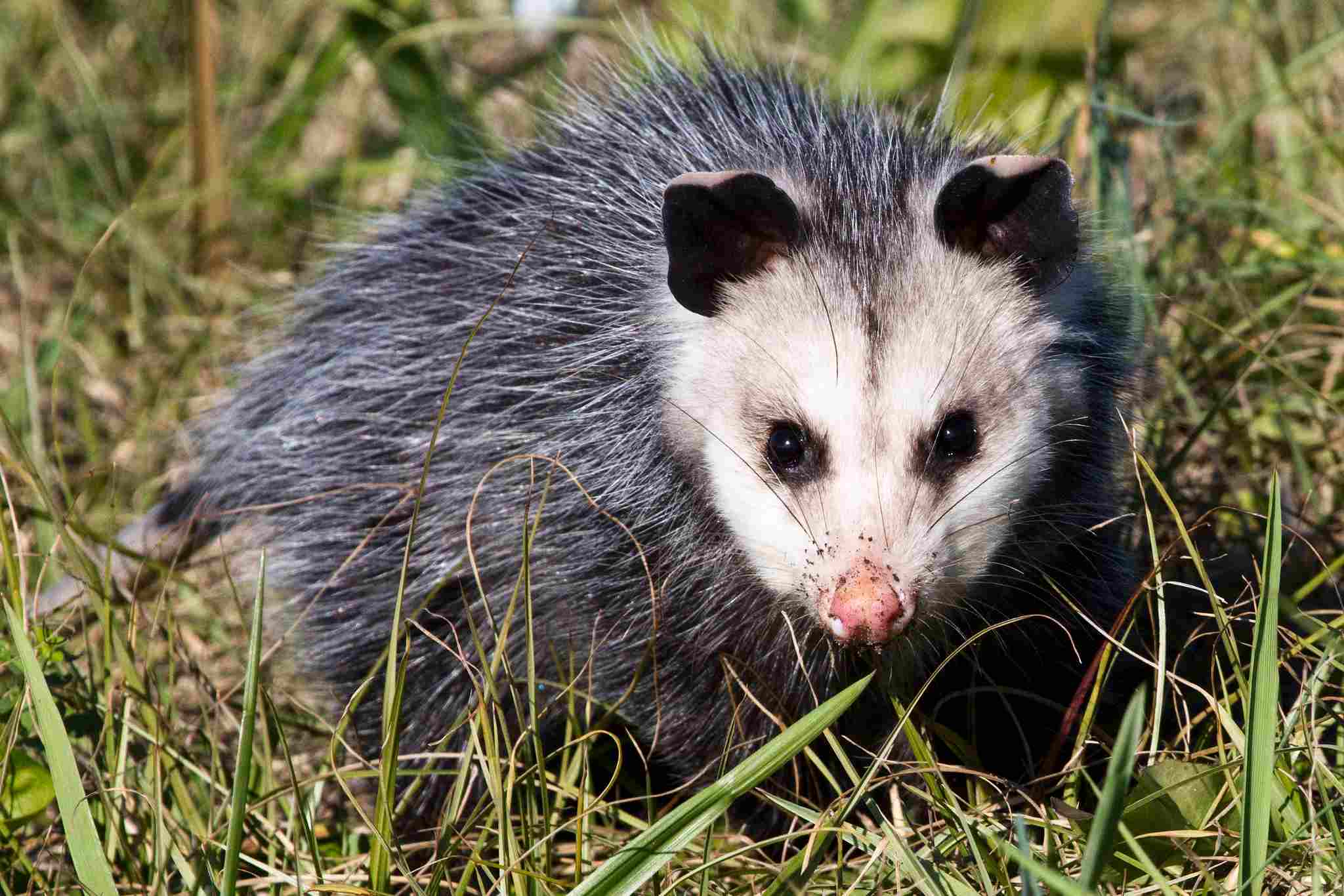
Possum:
Avoiding contact due to potential disease transmission.
Armadillo:
Caution advised when handling, considering the slight risk of leprosy transmission.
Comparison: Basic precautions, such as avoiding direct contact, apply to both species but are more emphasized with armadillos due to the potential transmission of leprosy.
Ecological Implications: Awareness of potential risks influences human behavior and interactions with these species.
24. Conservation Status
Possum:
Conservation status varies by species; some are of least concern, while others may face threats.
Armadillo:
Conservation status varies by species; some are of least concern, while others may face threats.
Comparison: The conservation status of both possums and armadillos depends on the specific species, with some facing potential threats.
Ecological Implications: Conservation efforts are influenced by the specific needs and threats faced by each species.
Summary of Comparison
Taxonomy:
Possum: Order Diprotodontia, Family Phalangeridae.
Armadillo: Order Cingulata, Family Dasypodidae.
Appearance:
Possum: Arboreal with prehensile tails, fur varies in color.
Armadillo: Bony armored shell, variable in size and color.
Size:
Possum: Varies by species.
Armadillo: Sizes vary among species.
Weight:
Possum: Varies by species.
Armadillo: Generally heavier, attributed to the bony shell.
Bite Force (PSI):
Possum: Moderate.
Armadillo: Moderate, adapted for insectivorous diet.
Physical Offensive Advantages:
Possum: Sharp claws and teeth.
Armadillo: Armored shell.
Physical Defensive Advantages:
Possum: Agile climbers.
Armadillo: Armored shell.
Speed:
Possum: Agile climbers, not fast runners.
Armadillo: Relatively slow runners.
Agility:
Possum: Highly agile in trees.
Armadillo: Limited agility due to the rigid shell.
Senses:
Possum: Good night vision.
Armadillo: Limited eyesight, keen sense of smell.
Overall Physical Capacity:
Possum: Suited for climbing.
Armadillo: Well-adapted for digging and burrowing.
Habitat Preference(s):
Possum: Forested areas, urban environments.
Armadillo: Varied habitats, including grasslands, forests, and burrows.
Tracks:
Possum: Distinctive prints in trees.
Armadillo: Clawed prints, may include burrow entrances.
Lifespan:
Possum: 2-4 years.
Armadillo: 4-5 years.
Mode of Feeding:
Possum: Omnivorous.
Armadillo: Mainly insectivores.
Intelligence:
Possum: Relatively intelligent.
Armadillo: Limited cognitive abilities.
Social Behavior:
Possum: Mostly solitary.
Armadillo: Primarily solitary.
Mode of Reproduction:
Possum: Marsupial reproduction.
Armadillo: Give birth to identical quadruplets.
Parental Behavior:
Possum: Females provide care in the pouch.
Armadillo: Mothers care for and protect offspring.
Proximity to Human-Inhabited Areas:
Possum: Common in urban areas.
Armadillo: May inhabit suburban and rural areas.
Behavior Toward Humans:
Possum: Generally nocturnal and shy.
Armadillo: Usually shy, may display defensive behavior.
Danger Posed to Humans:
Possum: Generally not dangerous.
Armadillo: Low risk, may transmit leprosy.
Associated Precautions:
Possum: Caution for potential disease transmission.
Armadillo: Caution due to leprosy risk.
Conservation Status:
Varies by species for both, some facing threats.
Conclusion
I. Similarities
Both possums and armadillos exhibit adaptability to various habitats, including urban environments.
Neither poses significant danger to humans.
II. Differences
Possums are marsupials with a pouch for carrying their young, while armadillos give birth to identical quadruplets.
Armadillos have an armored shell for protection, while possums rely on agility and climbing abilities.
Conservation status varies by species for both, with some facing potential threats.
